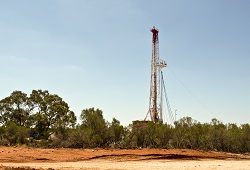Digging holes and building columns to defend against earthquakes
In earthquake engineering, the amplification of seismic waves – namely site effects – can strengthen the impact of an earthquake in specific areas. This was seen in the 1985 Mexico City earthquake, which was particularly destructive and deadly because of the ancient lakebed that the city is built on. When seismic waves propagate through soft superficial alluvial layers – as was the case in Mexico City – or scatter on strong topographic irregularities, the phenomena of refraction and scattering can increase the amplitude of the ground in motion. So what can be done to better protect these vulnerable areas? For researchers working within the EU-funded ANAMORPHISM project, the answer is to dig a hole. Holes and piers ANAMORPHISM researchers have developed and tested a way to place boreholes at carefully spaced intervals in front of an area they want to protect, essentially creating a manmade barrier capable of deflecting an earthquake’s shockwave. Tested in Grenoble, France, the project drilled three rows of 10 five metre deep holes. Generating a small 50 hertz surface earthquake, the ANAMORPHISM system successfully deflected the wave backwards. ‘This experiment shows that, at much larger scales, natural soils civil engineered at decimetre to metre scales may interact with seismic waves when the global properties of the medium are modified,’ says Project Coordinator Sébastien Guenneau. The system can also be adapted to protect coastal areas against incoming tsunami waves by diverting them around villages rather than through them. Instead of using boreholes, however, the project builds a series of pillars on the waterbed. Just as the boreholes deflect a seismic wave, the pillars deflect the waves that approach them. A seismic cloak According to Guenneau, the ANAMORPHISM system is an adaptation of the invisibility cloak concept developed by British theoretical physicist John Pendry. ‘Whereas invisibility cloaks deflect light waves around a hidden object, ANAMORPHISM’s technology deflects the shockwaves from earthquakes and tsunamis,’ he says. ‘We’re really applying the same tools to a different concept.’ However, Guenneau notes that before seismic cloaks can be used to protect buildings from earthquakes, further in-depth analysis is needed to achieve the required arrangement of boreholes. He notes that related theoretical research suggests replacing the boreholes with meta-cylinders with side holes, which would dampen the seismic surface waves and reduce the amount of seismic energy reflected from the metamaterial. ‘The dampening of the seismic waves means that some of the energy carried by them is transformed into another type of energy, such as sound or heat,’ says Guenneau. Although further research and experiments are needed, Guenneau remains confident that, over time, the ANAMORPHISM concept can be scaled up and used to protect harbours and cities. In fact, the project has already given rise to two patents for seismic defence structures and a patent for a new generation of dykes to protect coastlines against tsunamis. ‘Once scaled up, this technique could save hundreds of thousands of lives,’ says Guenneau. ‘Imagine a city of the future, fortified against seismic surface waves by a trench of bore holes or columns of concrete.







